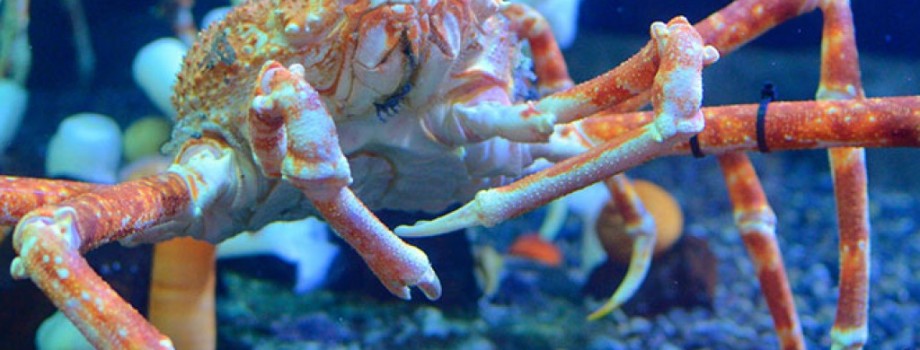Victoria-based marine scientist, Sheree Marris, is no stranger to the marvel of giant spider crab aggregations, but when she pulled out her camera to film this year’s aggregation, she was completely blown away by the staggering numbers.
“I’ve never seen so many before,” she told ABC. “I swam in a straight line for four-and-a-half minutes and the crabs were thick on the sandy shallows. It was gobsmackingly amazing”.
In previous years, Marris says she would swim around two-and-half-minutes alongside this magnificent sight, showing that the numbers heading to Southern Australian shores is obviously increasing.
The event, which occurs around May and June every year, has attracted the interest of David Attenborough and the BBC, but for a large number of Australians, it remains an underwater secret. Many don’t realise that this sight is readily accessible, and you don’t have to be a scuba diver or snorkeller to enjoy it. Simply head to the waters surrounding Port Phillip Bay with a pair of goggles and you could witness this awe-inspiring natural phenomenon yourself.
Why does it happen?
While there hasn’t been a great deal of research into why these incredible alien-looking creatures move in such large piles, it is thought that it’s a ‘safety in numbers’ activity designed to keep freshly molted crabs safe.
Spider crabs, part of Australia’s biodiverse marine life, move slowly on their six legs and have long, thin pincers which are not as strong as those of many of their cousins and they can grow up to 16 cm wide. They form a hard shell (exoskeleton) and usually gather seaweed and algae to stick to their shells as a form of camouflage, in a way to protect themselves from octopus, larger fish, stingrays and seagulls.
This form of protection is usually enough to keep them safe, but a crab’s hard shell isn’t forever.
Crabs (and other crustaceans) cannot grow in a linear fashion like most animals. Because they have a hard outer shell, they must shed this to allow for increased growth. This process is called molting, and while it allows them to get bigger, the release of their hard, protective shell makes them extremely vulnerable to waiting predators. This may be a reason why they chose to aggregated in such large numbers.
Just check out this video which shows a stingray hovering around a molting spider crab. Having waited until the precise moment the shell is off, this poor crab didn’t stand a chance!
Once a crab has molted, it takes time to grow a new, bigger shell. Their new shell is soft for up to 48 hours and offers little protection, meaning that banding together increases their chance of survival. The ones on the outside are still exposed and at risk of being picked off, but for those lucky enough to be in the middle, it’s a much safer way of getting about.
How many are there?
While the exact numbers moving together are unknown, the pile of crabs is often ten high and incredibly deep. We imagine that as a predator, you’d likely be put off by an army of 10,000, no matter how vulnerable they are!
In terms of deciding which crabs go on top of the pile, “it’s every crab for themselves,” says Marris. “There’s no hierarchy. It’s just this orange chaos of legs and claws. It’s a moving blanket of legs and claws really, it’s pretty awesome.”
Once the crabs shells have hardened, they go back to being solitary creatures again, casually strolling on the ocean bed like the one in the image above.
Sea life diversity
Port Phillip Bay is extremely popular, with over 3.2 million people live around its shore. It has a rich variety and wonderful diversity of marine and estuarine habitats. Supporting stable communities of mixed local species, it also supports a large diversity of migratory species which move into, out of, and around the bay.
Ms Marris is author of the book Melbourne Down Under and hopes to raise awareness of the diversity of sea life in Australia’s southern waters as well as see more people enjoying this spectacular sight. “People think Port Phillip Bay’s a marine wasteland…but this is really unique and really spectacular,” she said. “Not only is Melbourne the most liveable city above the water, it’s also the most liveable below the water.” At least it is for those wise enough to move in numbers.






 (1 votes, average: 4.00 out of 5)
(1 votes, average: 4.00 out of 5)